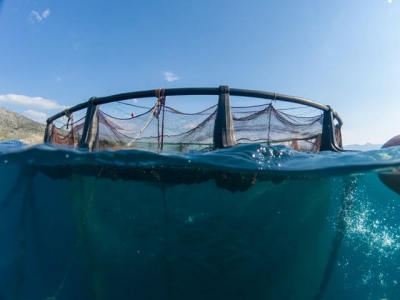Cameras may underestimate damage from fish farms

The camera system used to survey the seabed beneath structures such as net pen fish farms, could be seriously underestimating disturbances to ecosystems, according to new research.
A new report by researchers from Heriot-Watt University says that sediment camera systems, known as SPI cameras - which have been used for decades to document the health of the seafloor around fish farms and oil and gas platforms - are probably painting an inaccurate picture for regulators and authorities.
SPI cameras work by penetrating the sediment and taking a side-on picture. The images can tell researchers how healthy or polluted the sediment is, based on its colour and thickness, and the presence or absence of animals.
Research suggests that the sediment beneath fish farms may be less healthy than originally thought
Annabell Moser, from the Lyell Centre, a partnership between Heriot-Watt and the British Geological Survey (BGS), led the research.
With scientists from BGS and the Scottish Association of Marine Science (SAMS), she developed a laboratory version of the SPI camera to test the likelihood that the camera system was giving inaccurate results.
Moser said in a press release: “Our tests showed that the model camera caused particles from the top layer to be dragged down into deeper layers, which very possibly makes the sediment look much healthier than it actually is.
“This is concerning, because for 50 years this camera system has been used by authorities as a way to determine whether industrial activity is harming the seafloor.
“Our research shows that the damage from fish farming or oil and gas activities may have been underestimated.
The team will work with the Flanders Marine Institute in Belgium later this year to test the extent of sampling artefacts associated with actual SPI camera systems.
Related news
 Many dangerous diseases occur in aquatic products
Many dangerous diseases occur in aquatic products Inspections have revealed that dangerous diseases on farmed aquatic animals have appeared constantly, particularly among shrimp and pangasius.
 Novel offshore fish farm edges closer to commercial reality
Novel offshore fish farm edges closer to commercial reality A novel offshore fish farming system has taken a step towards commercialisation, following the completion of a successful feasibility study.
 How 'dirty' water can improve shrimp survival and growth rates in RAS
How 'dirty' water can improve shrimp survival and growth rates in RAS Explains a novel means of microbial management in recirculation aquaculture systems (RAS) and how this is helping him produce market-sized shrimp in record time